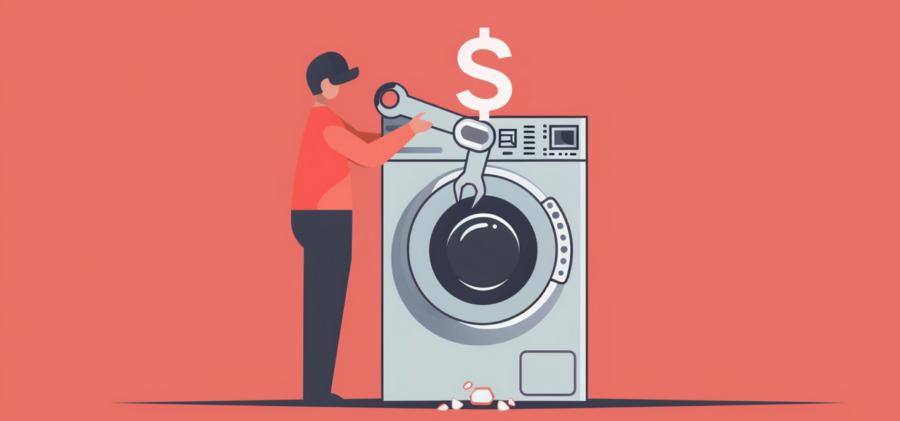Sticker Price Lies
Sure, that $1,200 fridge looks slick online. But once you get past the glossy marketing and the staged kitchen photos with artisan baguettes, reality bites back. The base cost? Just the opening bid. Delivery? Another hundred bucks. Old unit removal? Maybe $50 to $150 depending on where you live and how grumpy the installer is that day. Want them to install the water line, level it, and not gouge your drywall? More fees. You could be in for $1,400 before it even starts humming.Now consider this: many mid-tier appliances fail not because they’re beyond saving, but because a $30 sensor or $100 heating element gave out. A modest $200 repair might extend your appliance’s life by 3 to 5 years. That’s not romantic, but it’s fiscally sharp.
The Environmental Backwash
Every time you replace an appliance, it doesn’t disappear into a puff of biodegradable glitter. It often ends up in a landfill or scrapyard, with refrigerants that need professional extraction and metals that leach into soil over decades. Even when recycled “properly,” many components are shipped across the world to be broken down, often in conditions that would make OSHA faint.Repairing doesn’t just keep money in your pocket—it keeps heavy metals and non-biodegradable parts out of ecosystems. A simple fix like a dryer belt replacement might prevent over 100 pounds of mixed materials from entering the waste stream. It’s less sexy than “smart home upgrades,” but your grandchildren’s water table might thank you.
Appliance Replacements Are Never Plug-and-Play
Some people imagine appliance swaps as something out of a 90s IKEA ad: open box, plug in, victory sandwich. Here’s what often happens instead: the new dishwasher is half an inch taller than your counter clearance, the new fridge requires a reverse door swing you didn’t consider, or the dryer needs a gas hookup instead of electric. You end up learning how to disassemble cabinetry—or paying someone else to.Older homes in particular don’t play nicely with modern appliance dimensions or hookups. You might be looking at minor renovations just to get a new model to fit. That $1,200 decision? It balloons into a kitchen refresh you didn’t budget for.
Obsolescence Is Faster Than You Think
Manufacturers are pushing out new appliance lines faster than ever, with increasingly integrated (read: finicky) digital control systems. A machine you buy today could be unsupported in three years. Replacement parts become unicorns, and firmware updates are about as reliable as your uncle’s crypto predictions.By contrast, many older appliances—especially pre-2015 models—were built with simpler, more modular parts. These are often easier and cheaper to repair than the overdesigned smart units that beep when they’re bored. It’s a strange irony: the newer the appliance, the more likely you’ll be stuck replacing it again sooner.
The Myth of Time Savings
The argument goes like this: “It’s faster to just get a new one.” That’s cute. Have you actually tried replacing an appliance lately?Ordering the appliance is step one. Then comes delivery scheduling (hope you’re free between 8am and “sometime before the sun explodes”), installation hiccups, paperwork, and often a multi-day wait just to get your kitchen functional again. Meanwhile, you’re washing dishes by hand like a medieval serf or schlepping laundry to your in-laws. If that’s your idea of time well spent, you might also enjoy queueing at the DMV for fun.
Repair visits—especially when you catch the issue early—can often be booked and resolved within 48 hours. You pay a fraction of the cost, avoid major disruptions, and your Sunday doesn’t end with you trying to Google “how to level a refrigerator.”
The Confidence Factor
Here’s something nobody talks about: a repaired appliance is predictable. You know its quirks. You know how it sounds when it starts. You know that if you kick the corner a little too hard, the dryer door pops open mid-cycle (okay, not ideal—but at least it’s consistent).New appliances, on the other hand, can be a roulette wheel. Early faults, DOA units, and weird software bugs are more common than manufacturers would like to admit. Nothing is more humbling than replacing your washing machine only to discover it’s allergic to half your wardrobe and throws an error code for “towel too fluffy.”
There’s a quiet, underrated luxury in simply fixing what you know. It’s not glamorous, but it works.
Repair Culture Is a Quiet Rebellion
When you choose to repair instead of replace, you’re pushing back against a system engineered for disposability. Planned obsolescence relies on consumer exhaustion and impatience. Choosing a $200 repair over a $1,200 purchase is an act of logic that undercuts a billion-dollar marketing push whispering that new is always better.It’s not about living like it’s 1975 again. It’s about recognizing that modern life has enough expenses without adding another avoidable one because the dryer door latch broke. And frankly, it’s satisfying to keep something running when everything else is trying to sell you a subscription plan.
Out With the New
The idea that newer is smarter has worn thin. Yes, there are times when replacement is unavoidable—catastrophic compressor failure, cracked internal drums, melted wiring harnesses. But those are the exceptions, not the rule.In many cases, a well-timed repair extends the life of your appliances by years and shields your wallet from unnecessary trauma. You skip the logistical nonsense, reduce your environmental impact, and retain the peace of knowing exactly what you’re dealing with.
That next appliance graveyard trip? Might be worth postponing. Sometimes the smartest move isn’t the flashiest—it’s the one that works, quietly, for another five years while you get on with your life.
Article kindly provided by easyfixrepair.ca


